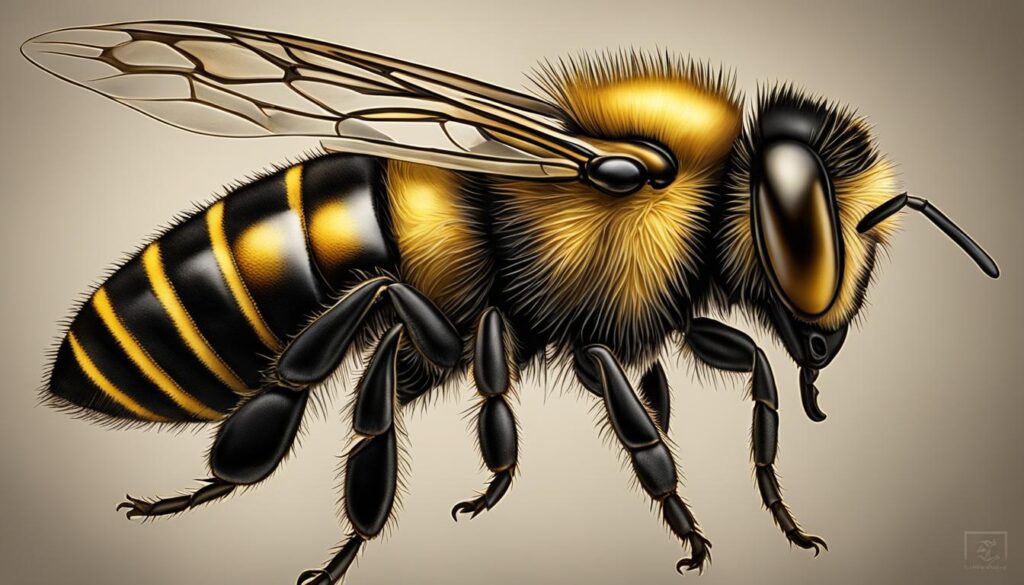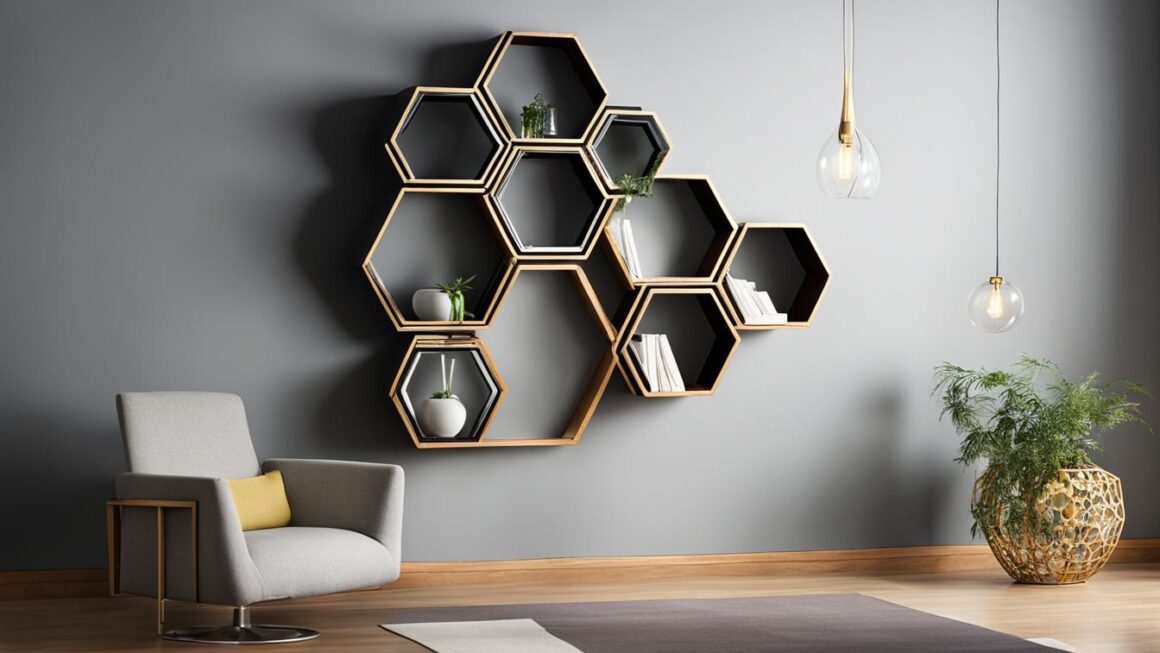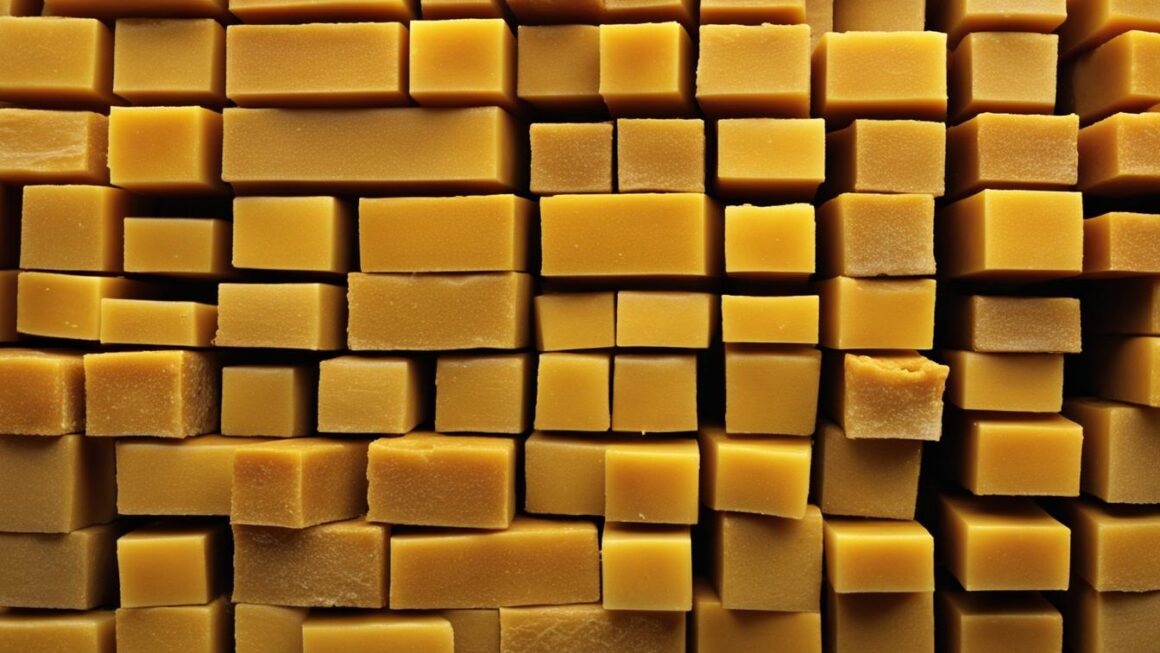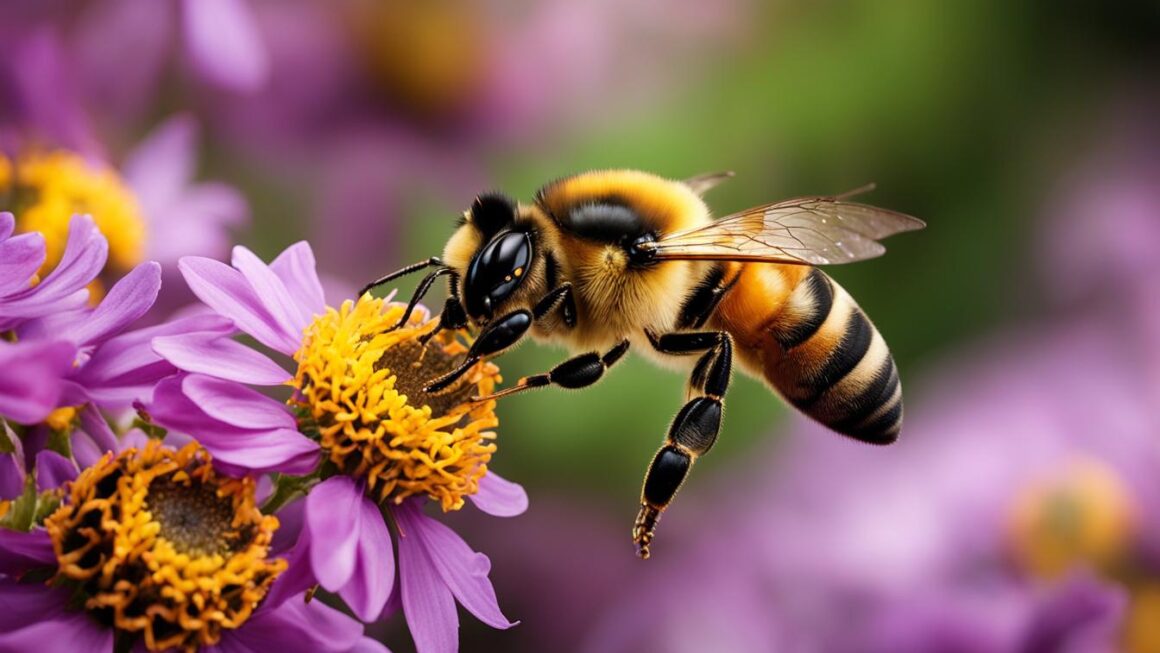Welcome to our fascinating exploration of the queen bee’s anatomy and abilities. In this article, we will delve into the question: does the queen bee have a stinger? We will uncover the unique characteristics of the queen bee, examine her internal structure, and unravel the mysteries of her role within the hive. Let’s embark on this journey to gain a deeper understanding of the queen bee’s remarkable nature.
Key Takeaways:
- The queen bee possesses a stinger, which she primarily uses for defense against rival queens.
- Unlike worker bees, the queen bee’s stinger is longer and lacks barbs.
- The internal anatomy of a queen bee includes specialized organs for reproduction and venom production.
- Queen bees play a crucial role in colony communication through the production of pheromones.
- Understanding the behavior and needs of queen bees is essential for successful beekeeping.
Anatomy of a Queen Bee: Examining the Internal Structure
The internal structure of a queen bee is complex and specialized, allowing her to perform the crucial role of reproduction within the hive. Let’s delve into the various organs and structures that make up the anatomy of a queen bee.
Ovaries and Spermatheca
One of the key features of a queen bee’s internal anatomy is her reproductive system. The queen bee has a pair of ovaries, which are responsible for producing eggs. Unlike worker bees, who are infertile, the queen bee can lay both fertilized and unfertilized eggs.
In addition to the ovaries, the queen bee has a spermatheca, which serves as a storage organ for sperm received during mating. The spermatheca allows the queen bee to selectively release stored sperm for fertilization, enabling her to control the genetic diversity of the colony.
Venom Sac and Venom Gland
Another notable component of a queen bee’s internal structure is her venom sac and venom gland. These specialized organs produce the venom that the queen bee uses for defensive stinging. Unlike worker bees, the queen bee’s stinger is not barbed, allowing her to sting repeatedly without losing her stinger.
It’s important to note that the queen bee’s stinging behavior is primarily directed towards rival queens. The venom serves as a defense mechanism, helping the queen bee protect her position as the primary reproductive female in the colony.
Summary
The internal structure of a queen bee is fascinating and highly specialized. From her reproductive organs, including the ovaries and spermatheca, to the venom sac and gland that produce her defensive venom, every aspect of a queen bee’s internal anatomy plays a crucial role in maintaining the hive’s reproductive success and harmony.
Unique Characteristics of the Queen Bee
The queen bee possesses several unique characteristics that set her apart from other members of the hive. One of these distinctive features is the presence of a stinger, although it is primarily used for defense against rival queens rather than stinging other organisms. Unlike worker bees, the stinger of a queen bee lacks barbs, allowing her to sting multiple times without it becoming lodged in the skin. This ability to sting without losing the stinger gives the queen bee an advantage in territorial disputes, ensuring her dominance within the colony.
Another notable characteristic of the queen bee is her elongated stinger, which is longer than the stingers of worker bees. The extended length of the queen bee’s stinger enables her to reach and attack rival queens more effectively. This specialized stinger is essential for maintaining the queen’s reproductive dominance and ensuring the survival of the hive.
In addition to her unique stinger, the queen bee also possesses other physical traits that contribute to her role within the hive. The queen bee is typically larger in size compared to worker bees, which allows her to lay larger eggs and produce more offspring. She also emits pheromones that help regulate the behavior and activities of the other bees in the colony, ensuring the smooth functioning of the hive.
Table: A Comparison of Queen Bee and Worker Bee Stingers
| Characteristics | Queen Bee Stinger | Worker Bee Stinger |
|---|---|---|
| Length | Longer | Shorter |
| Barbs | Absent | Present |
| Usage | Defense against rival queens | Defense and stinging |
The table above provides a comparison of the stingers of queen bees and worker bees. It highlights the key differences in their length, the presence of barbs, and their primary usage. The queen bee stinger is longer and lacks barbs, allowing for defense against rival queens, while the worker bee stinger is shorter and has barbs, serving dual purposes of defense and stinging.
In conclusion, the queen bee possesses several unique characteristics, including her elongated and barbless stinger. This specialized stinger, along with her larger size and pheromone production, enables the queen bee to maintain her dominance and ensure the colony’s reproductive success. Understanding these distinctive traits of the queen bee is essential for appreciating the complex dynamics within a beehive and the crucial role played by its queen.
The Role of the Queen Bee in the Hive
While the primary role of a queen bee in the hive is reproduction, she also plays a crucial role in colony communication and hierarchy. The queen bee is responsible for laying thousands of eggs, ensuring the survival and growth of the hive. She possesses specialized reproductive organs, including ovaries and a spermatheca, which allow her to lay both fertilized and unfertilized eggs.
Additionally, the queen bee produces pheromones that serve as chemical signals within the hive. These pheromones help regulate the behavior and tasks of worker bees, ensuring the smooth running of the colony. The absence of the queen’s pheromones can alert the colony to her absence and trigger the creation of a new queen. Therefore, the queen bee’s presence and pheromone production are vital for maintaining colony unity and organization.
Although the queen bee possesses a stinger, it is mainly used for defense against rival queens rather than for stinging other organisms. Unlike worker bees, the queen bee’s stinger lacks barbs, allowing her to sting multiple times without it becoming lodged in the skin. However, the primary focus of the queen bee is on reproductive activities and maintaining hive harmony, rather than hive protection.
| Queen Bee’s Role in the Hive | Worker Bee’s Role in the Hive |
|---|---|
| Reproduction | Foraging for food |
| Pheromone production | Building and maintenance of hive structure |
| Hive communication and organization | Processing nectar into honey |
| Selection and elimination of rival queens | Hive protection and defense |
Life Cycle of a Queen Bee
The life cycle of a queen bee is a fascinating process that begins when an egg is laid by the reigning queen. This egg is then cared for and nurtured by the worker bees in the hive. After a few days, the egg hatches into a larva, resembling a small, white worm. During the larval stage, the worker bees feed the future queen with a special substance called royal jelly, which provides her with the necessary nutrients for growth.
As the larva continues to develop, it undergoes several molting stages until it eventually pupates. Inside the pupa, remarkable transformations are taking place. The body of the queen bee is fully forming, with her wings, legs, and reproductive organs developing. After a period of time, the adult queen bee emerges from the pupal case, ready to take on her role as the leader of the colony.
Once the queen bee has matured, she embarks on her mating flight, during which she mates with several drones from neighboring colonies. The sperm received during these flights is stored in her spermatheca, a specialized organ that allows her to fertilize eggs throughout her lifetime. From this point on, the primary focus of the queen bee is to lay eggs and ensure the survival of the colony.
| Stage | Duration |
|---|---|
| Egg | 3 days |
| Larva | 5-6 days |
| Pupa | 7-8 days |
| Adult | Lifespan of up to 5 years |
The life cycle of a queen bee is a remarkable display of nature’s intricacy and the importance of her role within the hive. While her stinger is present, the queen bee rarely uses it, as her energy is directed towards reproduction and maintaining hive harmony. Understanding the life cycle of a queen bee provides valuable insights into the complex social structure and dynamics of bee colonies.
The Significance of Queen Bee Pheromones
Queen bees play a vital role in maintaining hive cohesion through the production of pheromones. These chemical signals act as messengers, influencing the behavior and physiological processes of other bees in the colony. The queen’s pheromones help regulate tasks such as foraging, brood care, and colony defense. They are crucial for overall colony organization and productivity.
One of the primary pheromones produced by queen bees is called the queen mandibular pheromone (QMP). This pheromone is released through the queen’s mandibular glands and has a significant impact on worker bee behavior. QMP is involved in suppressing the development of worker bee ovaries, ensuring that only the queen has the ability to lay fertilized eggs. It also influences worker bee aggression towards other queens and helps maintain overall colony harmony.
The absence of a queen’s pheromones can have profound effects on the hive dynamics. When a queen dies or is removed from the hive, the decline in pheromone levels signals to the colony that a new queen needs to be raised. This triggers the production of new queen cells and can lead to swarming behavior as the colony prepares to split and establish a new hive. The presence or absence of queen bee pheromones serves as a critical communication tool for the colony, ensuring the survival and success of the bee community.
| Pheromone | Function |
|---|---|
| Queen Mandibular Pheromone (QMP) | Regulates worker bee behavior, suppresses worker bee ovary development |
| Brood Pheromone | Stimulates worker bee brood care and foraging |
| Alarm Pheromone | Alerts colony members to potential threats |
| Nasonov Pheromone | Used for orientation and attracting bees to the hive |
Understanding the significance of queen bee pheromones provides insight into the complex social structure of honey bee colonies. These chemical signals ensure proper colony functioning and help maintain order and efficiency within the hive. Beekeepers must consider the presence and effects of pheromones when managing hives, as they can influence bee behavior and overall hive health.

| Behavior | Description |
|---|---|
| Egg-Laying Abilities | Queen bees have the unique ability to lay fertilized and unfertilized eggs, ensuring the reproduction and growth of the colony. |
| Pheromone Release and Communication | Queen bees release pheromones that serve as chemical signals to influence the behavior and activities of other bees within the hive. |
| Defensive Interactions | Queen bees primarily use their stingers for defensive purposes, engaging in physical confrontations with rival queens to establish dominance within the colony. |
The Defense Mechanism of Queen Bees
Queen bees have a unique defense mechanism that allows them to protect themselves against rival queens. Unlike worker bees, the stinger of a queen bee is longer and lacks barbs. This adaptation enables the queen to use her stinger as a weapon without it becoming lodged in her opponent’s body. When a queen bee engages in combat with a rival, she can inject venom through her stinger, incapacitating the rival and ensuring her dominance in the colony.
The venom produced by the queen bee serves as a potent deterrent, causing pain and discomfort to her rival. This venom is synthesized in the venom gland and stored in the venom sac, ready to be released through the stinger. The presence of a powerful stinger and venom allows the queen bee to establish her authority and maintain order within the hive.
| Comparison of Queen Bee and Worker Bee Stingers | Queen Bee Stinger | Worker Bee Stinger |
|---|---|---|
| Length | Longer | Shorter |
| Barbs | Absent | Present |
| Primary Use | Defense against rival queens | Defense and offensive stinging |
“The stingers of queen bees and worker bees differ in terms of length and the presence of barbs. The absence of barbs on the queen bee’s stinger allows her to sting multiple times without the stinger getting stuck, while worker bees may lose their stinger and perish after stinging.”
Understanding the defense mechanism of queen bees provides insight into their role within the hive and the complex dynamics of bee colonies. While the primary focus of queen bees is on reproduction and maintaining colony harmony, they possess a sophisticated means of protecting themselves and their position of power.
Comparing Queen Bee Stingers to Worker Bee Stingers
The stingers of queen bees and worker bees differ in several key ways. Queen bees have longer stingers compared to worker bees, which allow for better reach and accuracy during defensive actions. Additionally, queen bee stingers lack barbs, making it easier for them to withdraw their stingers and continue stinging multiple times without getting stuck. On the other hand, worker bee stingers are shorter and have barbs, which can become lodged in the skin of other organisms, including humans.
The differences in stinger anatomy reflect the distinct roles and priorities of queen bees and worker bees within the hive. Queen bees primarily use their stingers for defense against rival queens, ensuring their dominance and reproductive success. In contrast, worker bees are responsible for hive protection and may use their stingers both for defense and to sting potential threats to the colony, such as predators.
To further illustrate the contrasting stinger characteristics, let’s summarize the key differences in a comparative table:
| Queen Bee Stinger | Worker Bee Stinger |
|---|---|
| Longer length | Shorter length |
| Lacks barbs | Possesses barbs |
| Used primarily for defense against rival queens | Used for defense and stinging other organisms |
Understanding the differences between queen bee stingers and worker bee stingers provides valuable insights into the biology and behavior of these fascinating creatures. It also highlights the intricate social dynamics and division of labor within bee colonies, where each member has a specific role to ensure the survival and prosperity of the hive.
The Importance of Queen Bee Stingers in Hive Dynamics
While the primary role of a queen bee’s stinger is in defense against rival queens, its presence and effectiveness are crucial for maintaining harmony within the hive. The ability to eliminate rival queens allows the colony to sustain a single reproductive queen and prevent conflicts over leadership. The absence of a queen bee stinger can have significant effects on hive dynamics and may lead to the creation of new queens or the loss of the colony.
Queen bees are equipped with a unique stinger that differs from the stingers of worker bees. Their stingers are longer and lack barbs, allowing them to sting multiple times without becoming lodged in the skin. This attribute gives queen bees a distinct advantage in defending their position as the sole reproductive queen within the colony.
By eliminating rival queens through stinging, the queen bee maintains control over the hive’s reproductive activities. This ensures that the colony remains focused on the reproduction of worker bees and drones, rather than engaging in conflicts over leadership. The presence of a reproductive queen is vital for the survival and growth of the hive, as she is responsible for laying thousands of eggs and maintaining colony cohesion through the release of pheromones.
Without the presence of a queen bee stinger, rival queens may emerge and challenge the existing queen’s dominance. This can lead to a power struggle within the hive, potentially resulting in a split of the colony or the formation of multiple competing factions. The absence of a queen bee stinger can also disrupt the production and distribution of pheromones, which play a critical role in coordinating the behavior and tasks of worker bees.
| Effects of Queen Bee Stingers on Hive Dynamics | Benefits of Queen Bee Stingers |
|---|---|
| Prevents conflicts over leadership | Maintains control over reproductive activities |
| Ensures colony cohesion through pheromone production | Eliminates rival queens |
| Supports the reproduction of worker bees and drones | Allows for sustained growth and survival of the hive |
Overall, the presence and functionality of queen bee stingers are essential for maintaining a stable and productive hive. Their ability to defend against rival queens ensures that a single reproductive queen can lead the colony, while also promoting colony cohesion through the production and distribution of pheromones. Understanding the importance of queen bee stingers in hive dynamics is crucial for beekeepers and those interested in the fascinating world of bees and their hives.
Beekeeping Considerations for Queen Bees
When it comes to beekeeping, understanding the behavior and needs of queen bees is crucial for maintaining a healthy and productive hive. While queen bees are not typically aggressive towards humans, it is important to handle them with care to ensure colony stability and minimize stress. Here are some key considerations for beekeepers when working with queen bees:
Queen Bee Introduction
When introducing a new queen bee to a hive, it is essential to follow proper procedures to ensure acceptance by the worker bees. Gradual introductions, such as using a queen cage, can help the bees become familiar with the new queen’s pheromones and reduce the risk of rejection. It is also important to monitor the hive closely during the introduction process to detect any signs of aggression or rejection.
Queen Bee Replacement
Queen bees have a limited lifespan, and beekeepers may need to replace them at certain intervals to maintain a thriving colony. It is crucial to carefully select a new queen with desirable traits, such as good egg-laying abilities and gentle behavior. Additionally, timing is important when replacing a queen to minimize disruptions to the hive’s dynamics.
Swarm Prevention
Swarming is a natural behavior of honey bee colonies, but it can lead to the loss of a significant portion of the hive’s population. Beekeepers can take several measures to prevent swarming, such as providing adequate space for the expanding colony, ensuring a healthy environment, and manipulating the hive’s queen pheromones. Regular inspections and monitoring can help identify signs of swarming and allow for timely intervention.
| Consideration | Key Points |
|---|---|
| Queen Bee Introduction | Follow proper procedures, use gradual introductions, monitor for rejection |
| Queen Bee Replacement | Choose a new queen with desirable traits, time replacements carefully |
| Swarm Prevention | Provide adequate space, maintain a healthy environment, monitor hive for signs of swarming |
By considering these factors and implementing best practices, beekeepers can ensure the success and well-being of their queen bees and the overall health of the hive. The careful management of queen bees is essential for maintaining a thriving colony and maximizing honey production.
Conclusion
In conclusion, the queen bee does indeed have a stinger, although its purpose is different from that of worker bees. The queen bee’s stinger is longer and lacks barbs, allowing her to use it primarily for defense against rival queens. Unlike worker bees, the queen bee’s stinger is not used for stinging other creatures, including humans.
While the stinger of a queen bee is an important anatomical feature, its use is limited compared to that of worker bees. The primary focus of a queen bee is on reproduction and maintaining colony harmony through the production of pheromones. Understanding the unique role and behavior of queen bees is crucial for beekeepers and those interested in the intricate dynamics of bee hives.
By grasping the distinct characteristics and abilities of queen bees, beekeepers can manage their hives efficiently and promote the overall health and success of the colony. Proper techniques for queen bee introduction, replacement, and swarm prevention can ensure stability and prevent conflicts over leadership. Ultimately, the presence of a stinger in queen bees contributes to the fascinating world of bees and their complex social structure.
FAQ
Does the queen bee have a stinger?
Yes, the queen bee does have a stinger. However, she primarily uses it for defense against rival queens and not for stinging other organisms.
What is the difference between a queen bee stinger and a worker bee stinger?
The stinger of a queen bee is longer and lacks barbs, while the stinger of a worker bee is shorter, possesses barbs, and is used both for defense and for stinging other creatures, including humans.
What is the primary role of a queen bee in the hive?
The primary role of a queen bee is reproduction. She is responsible for laying thousands of eggs, which develop into worker bees and drones.
Do all queen bees sting humans?
Queen bees typically do not sting humans, as their focus is on reproduction and maintaining hive harmony. However, it is important to handle queen bees with care to maintain colony stability.
Why are queen bee pheromones important?
Queen bee pheromones serve as chemical messengers within the hive, helping to regulate the behavior and physiological processes of other bees in the colony. They are crucial for maintaining colony cohesion and ensuring that the workers carry out their designated tasks.
How does the absence of a queen bee stinger affect the hive?
The absence of a queen bee stinger can have significant effects on hive dynamics and may lead to the creation of new queens or the loss of the colony. The presence and effectiveness of the queen’s stinger are crucial for maintaining harmony within the hive.
Are queen bees stingless?
No, queen bees are not stingless. They have a stinger that is primarily used for defense against rival queens. However, their stingers are not typically used for stinging humans or other organisms.
What considerations should beekeepers have regarding queen bees?
Beekeepers must be mindful of the behavior and needs of queen bees when managing hives. Proper techniques for queen bee introduction, replacement, and swarm prevention can contribute to the overall success and health of a beekeeping operation.




